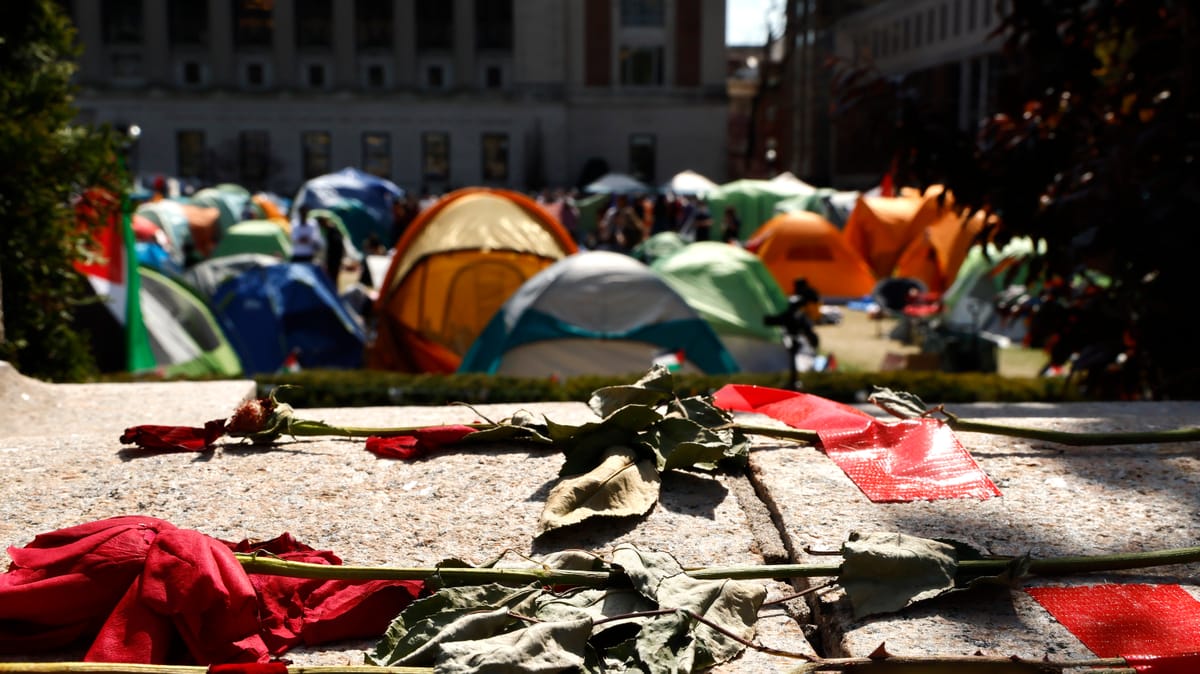Behind the Ivy Intifada

🌈 Abstract
The article provides an in-depth analysis of the protests at Columbia University over the Israeli offensive in Gaza, examining the complex dynamics at play, the motivations and actions of the various stakeholders involved, and the broader societal implications.
🙋 Q&A
[01] The Protests at Columbia University
1. What are the key insights about the protests at Columbia University?
- The protests at Columbia University over the Israeli offensive in Gaza reveal:
- The insincere commitment of elite institutions like Columbia to genuine social justice and activism
- The weaponization of identitarian and "safetyist" approaches to social justice to maintain the status quo
- The dissonance between the spectacle of unrest and the realities of the conflict in Gaza that has been overshadowed
- The tendency of elite student activists to approach politics as a sport, holy war, and means of self-expression rather than effective political action
- The disconnect between the university's marketing of itself as a site for activism and its actual crackdown on the protests
- The privileged position of Columbia students, who expect activism to be risk-free and career-enhancing
2. How does the article characterize the response of Columbia's administration, particularly President Shafik, to the protests?
- President Shafik's response was characterized by:
- Testifying before Congress that Columbia was an "anti-Semitic hellscape" and cracking down on student groups
- Calling in the NYPD to forcibly dismantle the initial student encampment, leading to over 100 arrests
- Attempting to identify and suspend participants in the encampments, leading many students to abandon the protest
- Ultimately refusing to divest from Israel and calling in the NYPD again to clear out the occupation of Hamilton Hall
- Maintaining a heavy police presence on campus and restricting media coverage of the crackdown
3. How does the article situate President Shafik's actions within the broader context of elite institutions and their relationship to social change?
- The article argues that Shafik, as a "dominated faction of the dominant class," is constrained by the need to maintain her position and avoid alienating elite gatekeepers, even if it means compromising her integrity or alienating large segments of society.
- Her actions are characterized as those of an agent of Columbia University, whose core function is the reproduction and legitimation of social inequality, rather than genuine social change.
[02] The Dynamics of Student Activism at Elite Institutions
1. How does the article characterize the motivations and approaches of the student protesters at Columbia?
- The article suggests that many student protesters:
- Lack a coherent understanding of the conflict in Gaza and the functioning of the institutions they are protesting
- Approach activism as a form of self-expression and status-seeking rather than effective political action
- Expect activism to be risk-free and consequence-free, contrary to the principles of civil disobedience
- Ultimately prioritize protecting their future career prospects over sustained resistance
2. What insights does the article provide about the relationship between elite institutions and student activism?
- The article argues that elite institutions like Columbia market themselves as sites for activism, but in reality, they are more concerned with the reproduction of social inequality and the legitimation of existing power structures.
- The article suggests that the university's response to the protests, including the threat of disciplinary action, reflects an attempt to maintain this status quo and undermine genuine social change.
3. How does the article contextualize the protests within the broader dynamics of social change and political action?
- The article suggests that effective political action requires "discipline, patience, and persistence," which is often lacking in the approach of elite student activists.
- It contrasts the "armchair radicalism" of professors and students with the realities faced by the people of Gaza, whose suffering has been overshadowed by the campus protests.